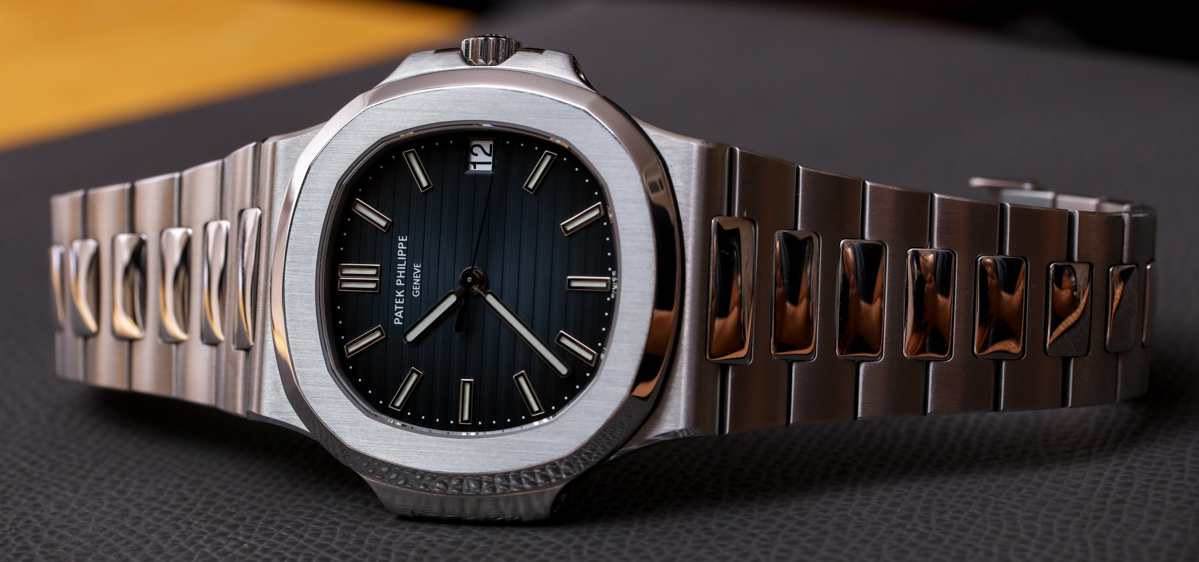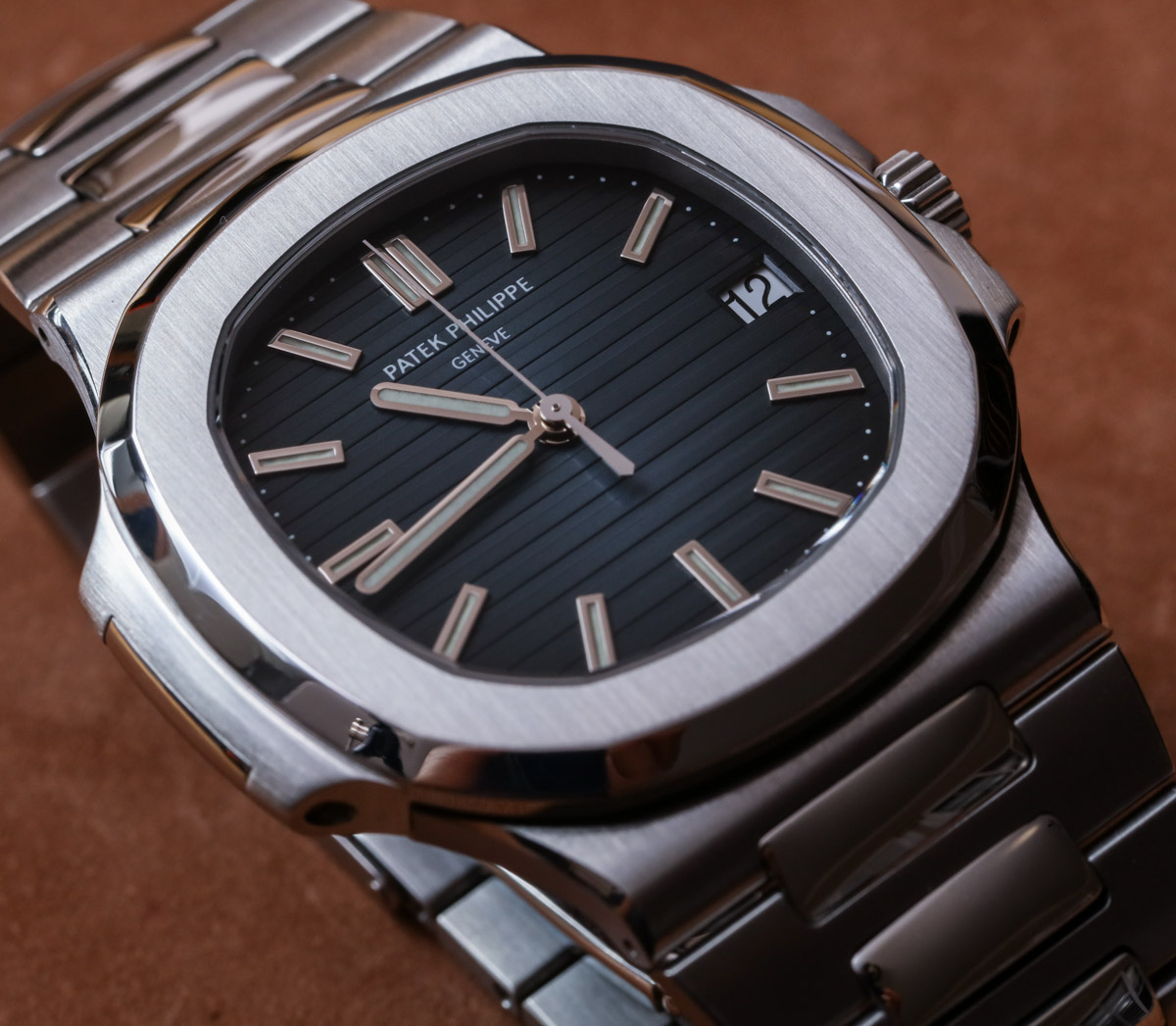
As it stands, the Patek Philippe Nautilus 5711 is a warm and welcoming blast from the past for those who feel that something reminiscent of the 1970s deserves a place on their luxury watch totem pole. By all accords, the Patek Philippe Nautilus is a fine timepiece (though Genta’s “wall clock inspired” dials can sometimes calm me to sleep). The real question people need to ask themselves is, “Does it speak to me?” It’s okay if it doesn’t, but for many watch collectors, the Nautilus has spoken loud and clear to them.
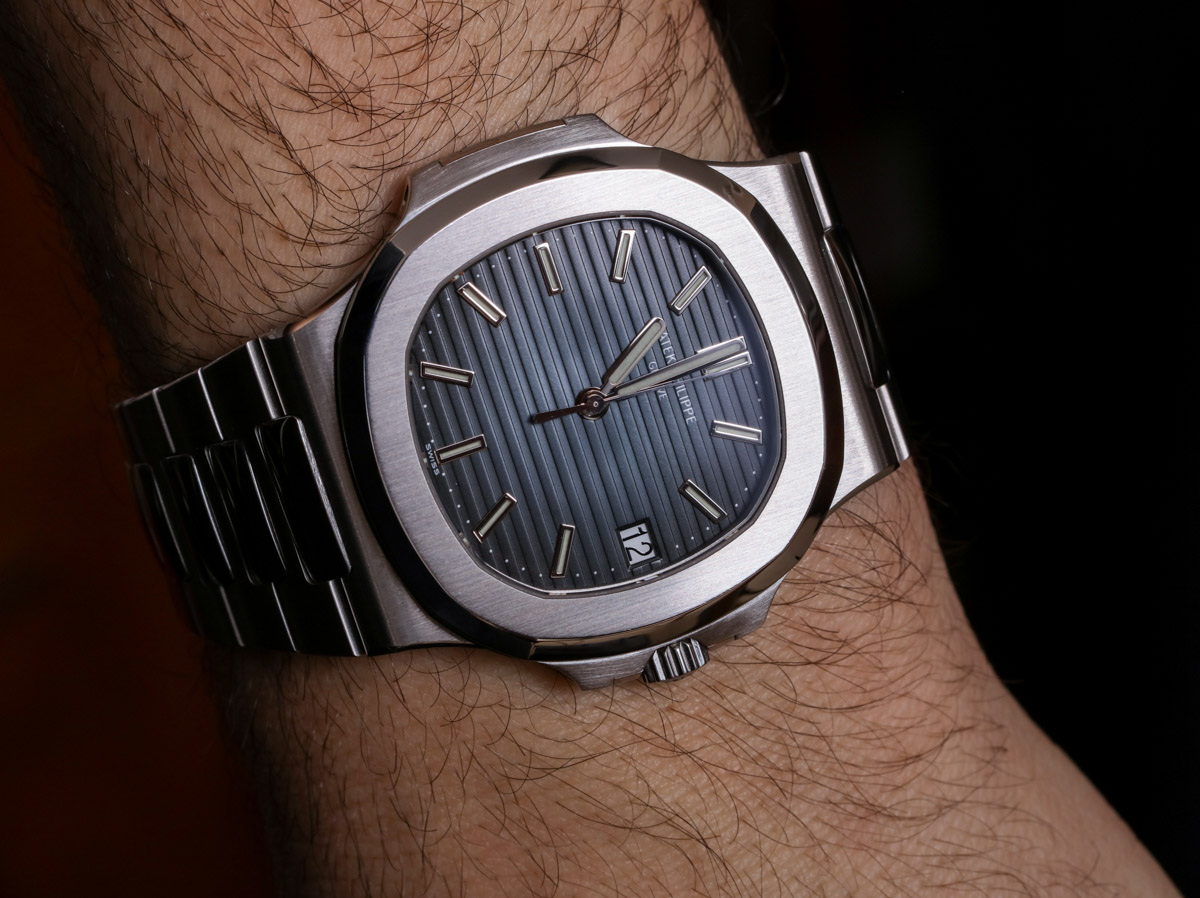
I return to the question of whether or not Patek Philippe needs to charge almost $25,000 for the Nautilus. What’s more, how do they seem to be going for retail or higher prices on the open market? Retailers of Patek Philippe timepieces claim they receive so few of these watches from the brand, which, if true, indicates that Patek Philippe is either intentionally trying to send out as few 5711s as possible, or something actually prevents them from producing more than they do now. The answer isn’t immediately clear, but I can say that the time spent to produce each Nautilus watch is not just in the movement, but also largely in the case.

Compared to other watches that just have a case, the Nautilus has a full bracelet. That means there are a lot of additional parts that need to be constructed, finished, checked, and assembled. Thus, the production time of a watch with a complicated bracelet such as that of the Nautilus can easily be double the production time of a watch without one. Furthermore, Patek Philippe likely doesn’t have a massive industrial center producing bracelets, so the quantity of Nautilus watches is simply limited by production capacity given the many varied parts.
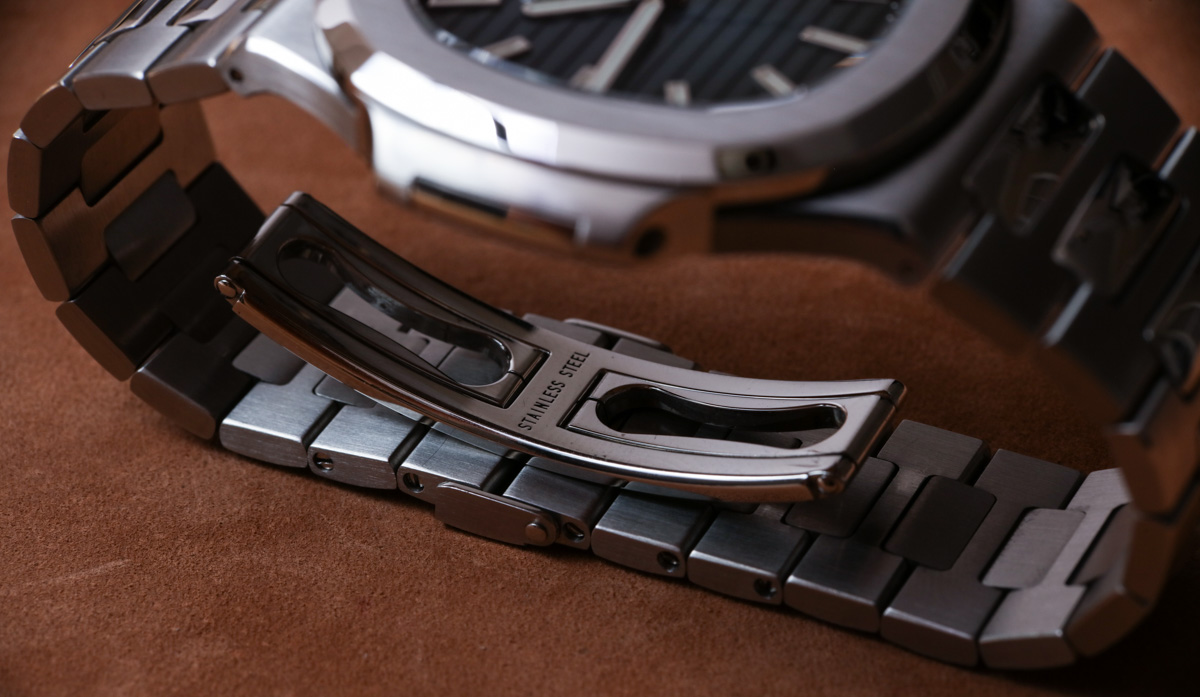
The below information is found on Patek Philippe’s own website (although it isn’t too easy to find), and I think it well-illustrates the complexity of the Nautilus case and bracelet production and finishing process:
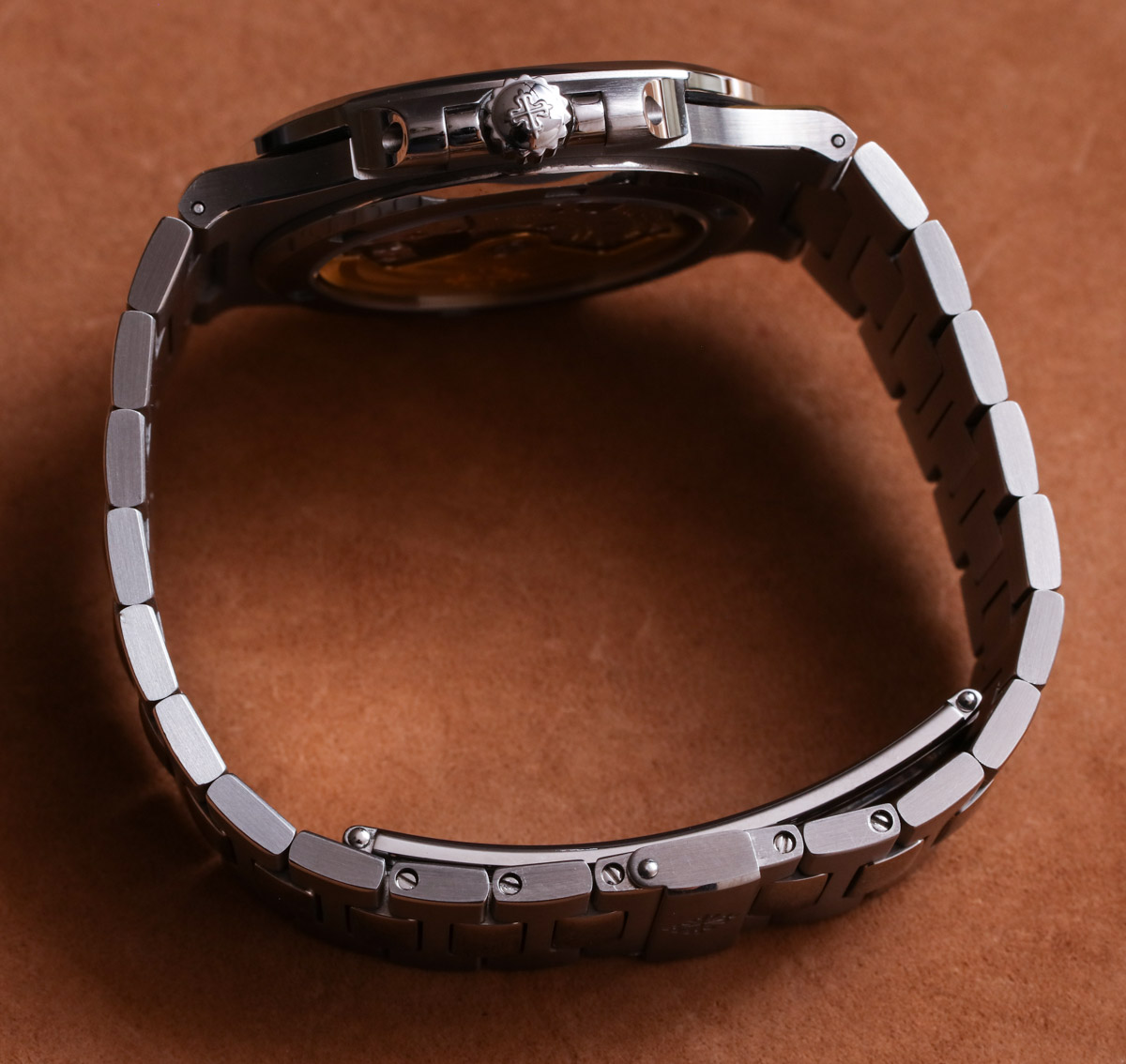 “[The Nautilus is] also perfect for the purpose of illustrating case and bracelet hand-finishing – and in particular, polishing techniques. The polishing alone includes machine sandblasting, lapping/emerizing, felt polishing, satin brushing, and polishing and buffing.
“[The Nautilus is] also perfect for the purpose of illustrating case and bracelet hand-finishing – and in particular, polishing techniques. The polishing alone includes machine sandblasting, lapping/emerizing, felt polishing, satin brushing, and polishing and buffing.
After machining, it takes around 55 different hand-finishing operations to complete the Nautilus case and bracelet. It begins with preparing the exterior links one by one: emerizing on the underside and satin brushing on top. Then preparing the center links one by one: emerizing on the underside, mirror polishing on top. Next is the assembly of the bracelet: fitting the links together and driving in the pins.
Chamfering, which means cutting away sharp edges, is then performed on the underside and top of the bracelet. The underside and top are then satin brushed for a uniform surface. Next is masking – protecting the surrounding area ahead of the next operation with lacquer or tape, and attaching perforated masking tape along the top of the bracelet. Then the center links and chamfer work are polished and buffed. Next, the clasp is assembled, adjusted for tension, fitted to the bracelet, and the cover riveted (on a triple-blade clasp). A final inspection follows this.”

Patek Philippe says it pretty well, and I think the takeaway is that the Nautilus is a genuinely complicated watch to construct and assemble. Is it $25,000 complicated? Patek Philippe says yes. Two current versions of the Nautilus 5711 are produced today. The first is the gradient-blue dial (eference 5711/1A-010), and the second is the silver with black markers (reference 5711/1A-011). The former is the vastly more popular variant, while the latter is arguably the more legible of the two. If I were to choose one, I’d go with the silver dial simply because there is less demand.
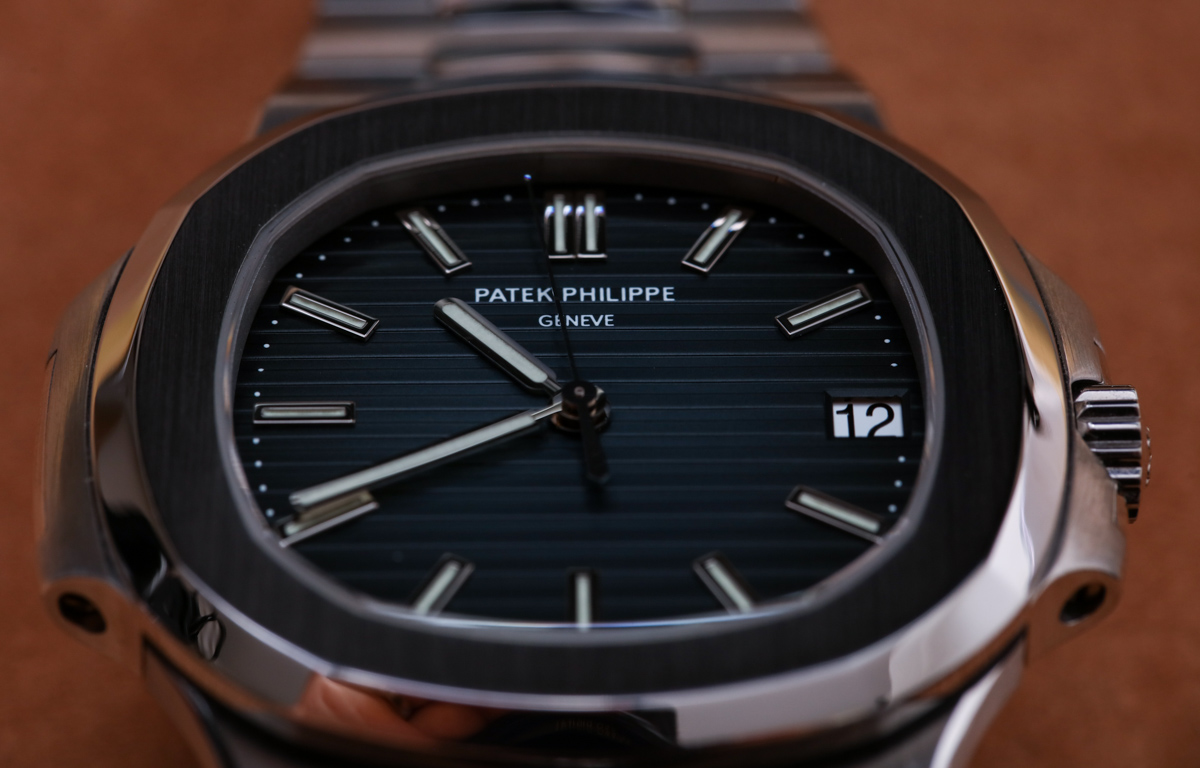
Though not everyone loves the date window on the Nautilus, I’ve never had an issue with it. I do agree that it does alter dial symmetry, but for me, having the date is just part of the Nautilus package. Without it, I’d feel like the dial was missing something. The 5711/1A has a steel case and bracelet, while the hands and hour markers (with luminant) are in 18k white gold. The luminant isn’t amazing, but it is definitely noticeable. The iconic “hot dog on a stick” style hands are lovely to read the time with, but not exactly masculine in a contemporary style. The hands are elegant, but there are other modern designs that demonstrate strength, so to speak.

